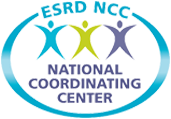Patient self-management support will increase patients’ skills and confidence in managing their health problems, including goal setting, regular assessment of progress and problems, and problem-solving support.
- Patient achieves optimum treatment outcomes and health status through collaborative knowledge-building related to CKD progression and treatment and through effective application of self-management interventions, such as self-monitoring and decision-making.
- Health care clinicians utilize techniques and strategies for the education of those who participate in vascular access education and management that are designed to encourage, enhance, and support patient self-management. This includes motivational interviewing, health coaching, and other patient empowerment strategies and techniques.
Changes for Improvement
Empower patients with earlier stages of CKD to:
- Know their GFR and Kidney Disease Stage
- Understand the dangers of PICC lines and blood draws and utilize tools and strategies to preserve arteries and veins once diagnosed with CKD
- Actively participate in developing their plan of care
- Understand all treatment modalities available for treatment of ESRD
Empower CKD Stage 4 patients preparing for hemodialysis to:
- Understand what criteria should be used to select the appropriate vascular access (vessel mapping, physical exam, co-morbid conditions)
- Compare the risks and benefits of all vascular access (AV fistulas, AV grafts, catheters)
- Identify and overcome barriers to timely placement of an AV fistula and have an AV fistula placed and matured before initiating hemodialysis
- Participate in developing their vascular access plan
- Know the benefits of self-cannulation and prepare for self-cannulation, i.e. pre-cannulation training
Empower ESRD patients on hemodialysis to preserve their AV fistula by:
- Understanding the need to examine their access several times daily by feeling for a thrill. If a stethoscope is available listen for a bruit and changes in sounds heard.
- Understanding access monitoring and interventional procedures to ensure vascular access patency
- Learning and performing self-cannulation and understanding access depth (deep access = 1¼” needle; very superficial=3/5” needles)
- Learning and performing buttonhole cannulation
Health care facilities, physicians and staff provide support for patient self-management by:
- Understanding and implementing the core concepts of patient self-management, dignity and respect, information sharing, participation, collaboration, and empowerment
- Developing guidelines and protocols to implement patient self-management concepts in all treatment areas including in-center dialysis, should be sensitive to cultural and linguistic competency of patients.
- Assess patient’s health literacy level, use visual aids, easy readability brochures and video tapes to assist patients to understand all aspects of their treatment, to include vascular access planning and care, fluid balance, nutrition, co-morbidities, and treatment modalities.
- Promoting self-management among patients to achieve better outcomes and quality of care
Resources
How to Have a Good Future with Kidney Disease
A patient-centered Chronic Kidney Disease (CKD) education series in 6 parts.
5 Diamond Patient Safety Program, Patient Self-Management
The 5-Diamond Patient Safety Program was developed as an innovative training and recognition program to assist dialysis providers in increasing awareness and building a culture of safety among patients and staff.
